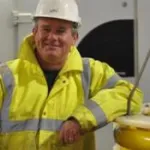- Produce new tools and techniques for environmental monitoring as well as CO2 emission monitoring, quantification and assessment;
- Generate new knowledge of the reservoir overburden by direct investigation of natural geological and manmade features;
- Deliver the first CCS demonstration project level implementation of an ecological baseline, incorporating geochemical and biological variability;
- Promote knowledge transfer to industrial and regulatory stakeholders and local and international communities.
NOC people
Autosubs (Autosub 5, Autosub Long Range)
Deep platforms (ROV, HyBIS)
Oceanographic sampling (sensor and mooring equipment)
Seafloor sampling (corers, dredgers, trawlers)
Geophysics (seismic surveys)
Communications (satellite, underwater, Internet communications)
STEMM-CCS

